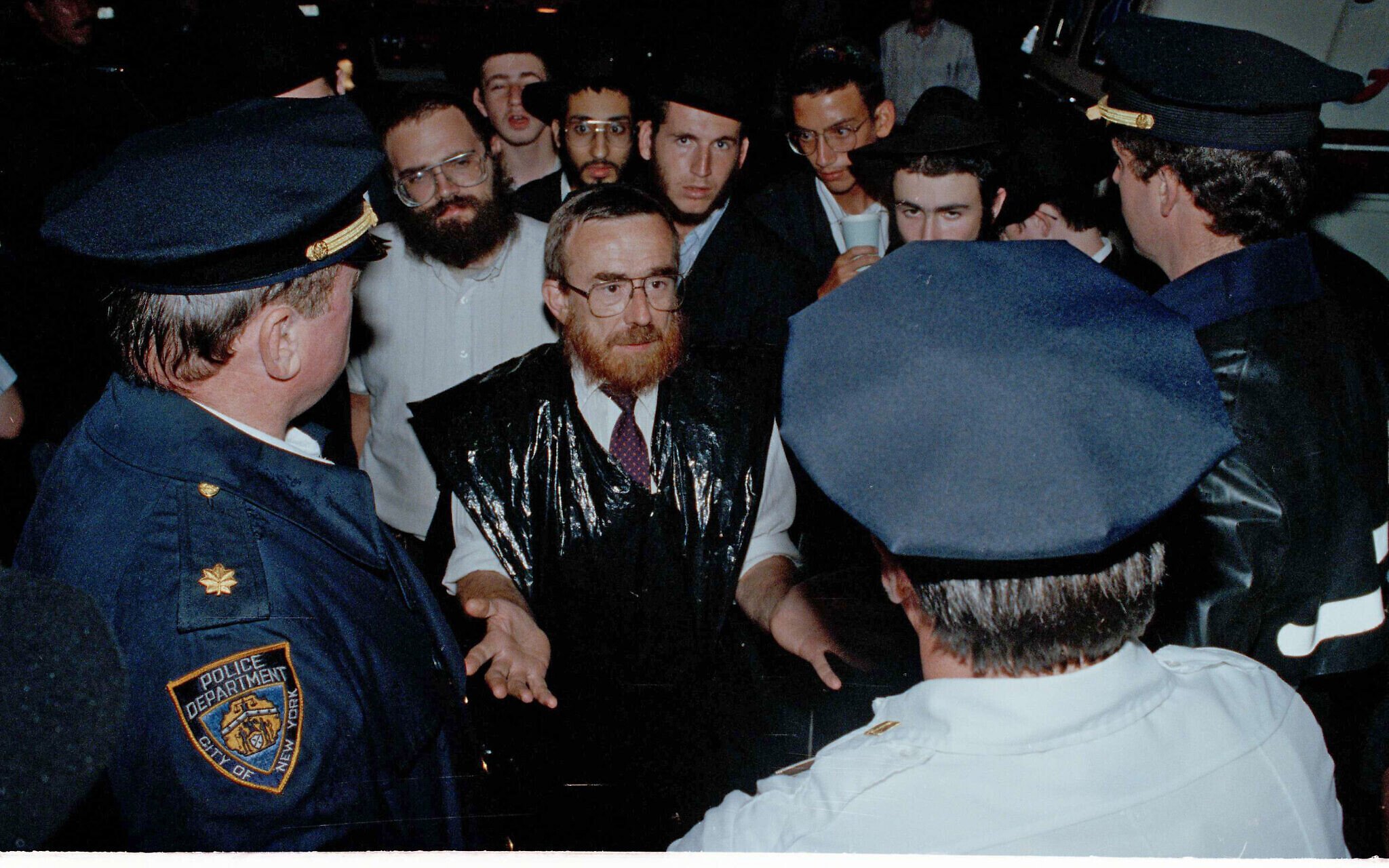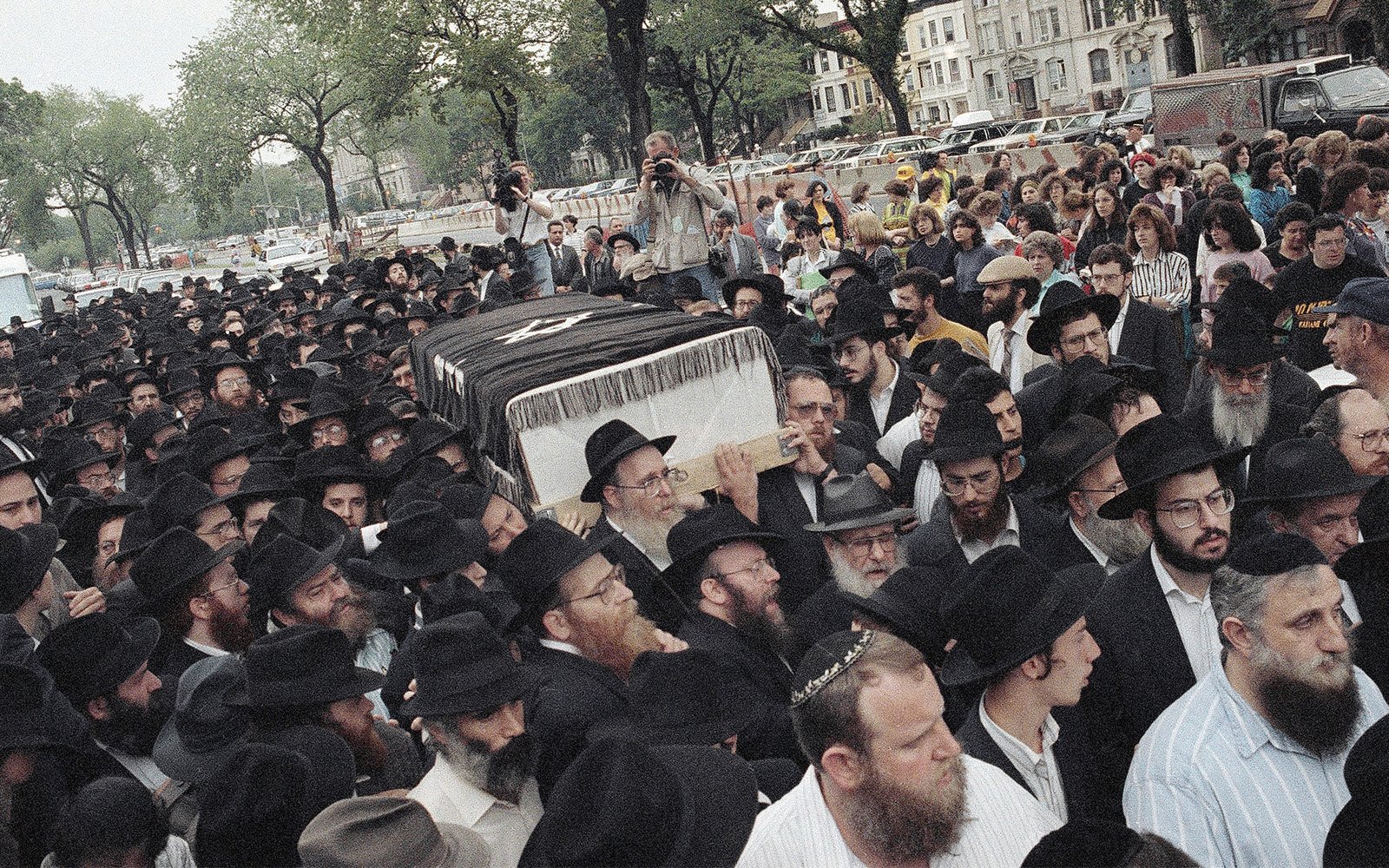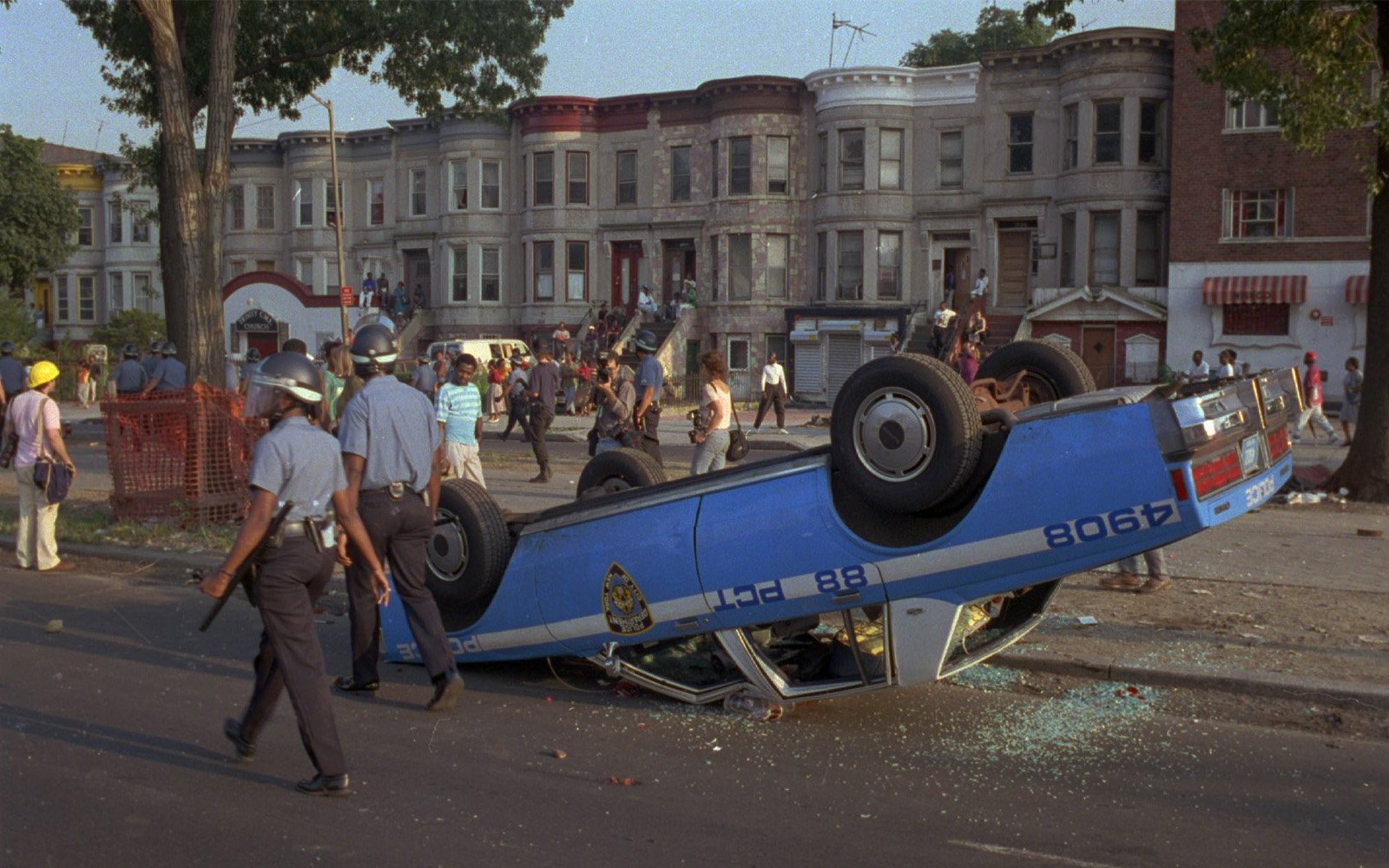



NEW YORK — In August 1991, a car carrying Rabbi Menachem Mendel Schneerson, the revered leader of the Chabad-Lubavitch Hasidic movement, crossed Utica Avenue in Brooklyn. A driver following Schneerson in his motorcade, aiming to keep up, sped through the intersection.
The driver lost control of his vehicle, veered onto a sidewalk, and struck two children, killing 7-year-old Gavin Cato, the son of Guyanese immigrants, and wounding Cato’s cousin.
The accident and its disputed aftermath incensed Black residents of the neighborhood and set off a days-long riot targeting Jewish residents of the area. Hours after the accident, a group attacked Yankel Rosenbaum, 29, stabbing him in the back and fracturing his skull. He died in the hospital. During the riots, attackers injured Jews, shouted “Heil Hitler,” looted stores, and damaged cars and homes that were identified by mezuzahs on their doors.
The riots remain a scar for the Jewish community, but racial relationships in the neighborhood have been calm in recent years. Two recent incidents, however, have dredged up memories of the riots, sparking fears of renewed racial unrest in the neighborhood, although the local environment has changed since.
Late last month, a Jewish man assaulted a Black man in a wheelchair during a sidewalk squabble over the Black man’s unleashed dogs. Crown Heights Jewish leaders condemned the incident, but video of the altercation stoked tensions. A flyer circulated calling for a protest outside 770 Eastern Parkway, the revered world headquarters for the Chabad movement. The site, known as “770,” includes a heavily trafficked synagogue and Schneerson’s former office.
“Assaulted in a wheelchair by members of the Orthodox Jewish community. Shame on the Jewish community,” one of the flyers reportedly said.
Then last week, far-right National Security Minister Itamar Ben Gvir made an unannounced visit to 770. Anti-Israel protesters gathered outside, chanting for an intifada and “resistance,” and sparking outrage over the protest at the holy site.
Footage later emerged of Jewish youths pursuing a woman down a street and chanting “Death to Arabs” in Hebrew, and another individual in a keffiyeh with a bloodied face. Chabad community leaders condemned the harassment.
The video clips again spurred outrage and calls for further protests. On Monday, protesters gathered at the Barclays Center, about an hour’s walk from 770, while counter-demonstrators gathered outside the synagogue.
Calls for this week’s protest featured explicitly racial messaging, and both sides brought up the 1991 riots, raising fears of renewed intracommunal tensions in the neighborhood.
“Waiting for the sleeping giant that is Caribbean Brooklyn, who have long suffered abuse and oppression at the hands of the racist Zionist Chabad Lubavitch to rise up against them,” a group calling itself Crown Heights Bites Back said on social media.
“Black people in Brooklyn are violently exploited via rents to then feed their genocidal land grabs in Palestine,” the post said. “What would happen if Carribean Brooklyn brought that vybz kartel Barclays energy with ferocity and tore down these fucking monsters!?”
The post ended with an emoji of an alarm clock. A follow-up post said, “Y’all will not eat off Black people forever.”
“Zionism is an ideology of Jewish exceptionalism and supremacy,” another post shared by several protest groups said. “It is the same ideology that justifies the genocide of Palestinians in Gaza and displaces our elderly Black neighbors.”
“We reject these frivolous and pathetic accusations of anti-semitism, and understand this violence as part and parcel of a settler-colonial Jewish-supremacist logic which oppresses Black and brown Crown Heights,” it said. “We must act now and defend ourselves.”
The Bronx Palestine Solidarity Committee said, “Y’all won’t wield landlord power of Black & Caribbean Brooklyn to fund Palestinian genocide forever… It’s only a matter of time.”
A protest organizer addressing the crowd at the start of the anti-Israel rally tied together the Israeli-Palestinian conflict, the wheelchair incident, last week’s protests, and the 1991 riots. For him, the riots were not a warning, but a threat.
“This problem that we have going on is everybody’s problem. It’s not just a Palestinian problem, it’s not just a Black problem,” he said.
“They don’t want us tying it together,” he said. “In 1991, there was pandemonium, riots, the Crown Heights riots, look it up. They ran over two Black kids.”
Later in the event, he told the rally, “Crown Heights is also a Black neighborhood.”
“They don’t want that war. They definitely don’t want that fucking war because it will be every day,” he said.
In both 1991 and this year, the activists tied the Jewish community to wider societal problems, such as housing and law enforcement.
Motti Seligson, a Chabad community spokesperson, said the heavy police presence in the neighborhood ahead of the protest was reminiscent of 1991, events he remembers from his childhood.
Rabbi Mordechai Lightstone, another community leader, condemned a statement from US Rep. Jerry Nadler that focused on harassment by Jews in the area, calling it “the same indifference that allowed the rioters in 1991 to pogrom on the streets of Crown Heights.”
“Tonight’s protest is a deliberate attempt to pit our Caribbean neighbors against us… using the timeless antisemitism of Crown Heights,” Lightstone said on X.
Despite the echoes of 1991, the recent unrest is different from those riots.
Police came out in force on Monday, keeping the opposing groups separated and the protesters away from 770. The anti-Israel protest was relatively small and there did not appear to be any serious violence. The Chabad community has also grown in the past three decades.
Seligson said that supporters of the community, both Jewish and non-Jewish, showed up out of concern and that the scene around 770 remained calm, unlike in 1991.
He added that in both 1991 and this week’s protest, people from outside the neighborhood had worked to stir up trouble.
“I think residents of Crown Heights, whether they’re Jewish or Black, have healthy respect for one another. It’s a unified community,” he said. “There are a lot more friendships and alliances, and partnerships that have been built over the years.”
And after the wheelchair incident, community leaders from both sides diffused tensions. The protest called for 770 was moved to another location, and its messaging was reframed as a call for peace. Leaders from both sides spoke about unity at the rally, and Jewish community leaders met with the man who had been assaulted.
“We absolutely condemn all violence, and I just want to end with a message my Rebbe said in 1991, right after the Crown Heights riots,” said Rabbi Yaacov Behrman, a local community organizer. “‘We are one people living in one city under one God.'”
Reverend Kevin McCall, one of the Black organizers, followed Behrman, saying, “We’ve been down these roads before, so we’re not trying to go back.”


